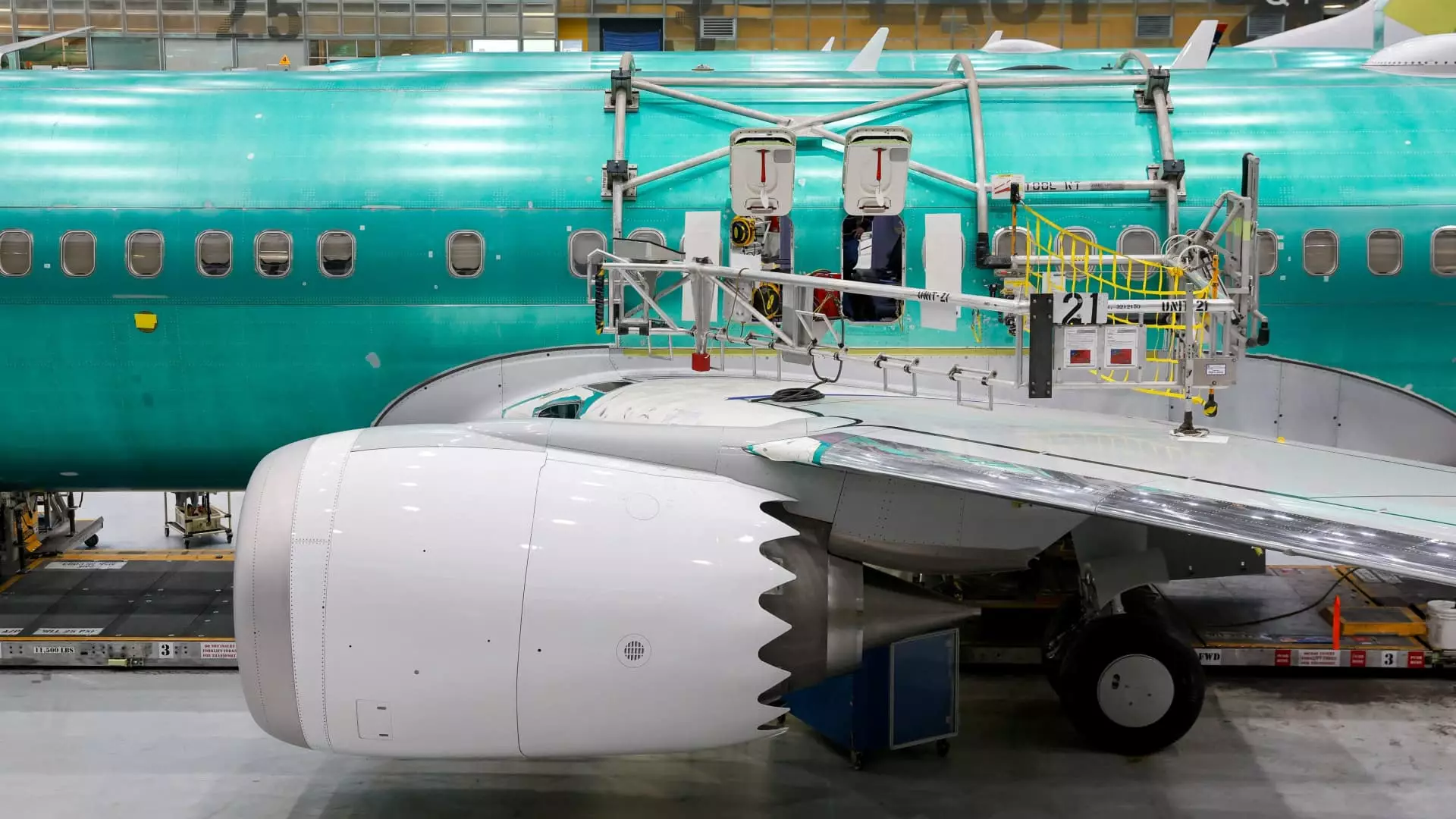Boeing, the aerospace giant and a cornerstone of the U.S. manufacturing sector, is at a critical juncture in its storied history. The company is engaged in what can only be described as another fundamental rebuilding year, one that follows a series of missteps that have severely undermined its reputation. The catalyst for this renewed scrutiny came last year, when an incident involving a Boeing 737 Max 9 operated by Alaska Airlines raised alarming safety concerns. A fuselage panel, meant to cover an unused emergency exit, dislodged mid-flight, eliciting panic among passengers. Thankfully, the aircraft managed a safe emergency landing in Portland, Oregon, but the incident sparked a renewed investigation into Boeing’s manufacturing processes. Preliminary reports from the National Transportation Safety Board (NTSB) revealed that essential bolts were missing from the aircraft—indicative of a deeper malaise afflicting the company.
The repercussions of this incident were profound. While the S&P 500 saw an impressive uptick of nearly 27 percent over the past year, Boeing’s stock languished with a staggering 30 percent decline. This disparity has serious implications not just for investors but for Boeing’s long-term viability as a leader in aerospace manufacturing.
In the face of mounting pressure, Boeing’s leadership has implemented sweeping changes, starting from the executive level. The appointment of a new chief executive officer (CEO), Kelly Ortberg, signifies a shift in direction for a company desperately in need of revitalization. With nearly three decades of aerospace experience, Ortberg brings a fresh perspective to Boeing’s challenges. His leadership philosophy emphasizes the need for a cultural shift within the organization, prioritizing safety and quality above short-term financial gains.
In a recent statement, Federal Aviation Administration (FAA) chief Mike Whitaker noted that the turnaround process for Boeing would not be a quick fix. “Enhanced oversight is here to stay,” he emphasized, reinforcing the idea that restoring trust in Boeing would require both significant internal change and external vigilance. Ortberg himself echoed this sentiment during his initial earnings calls, stating that doing less and executing it with excellence is better than spreading resources thin in pursuit of quantity.
The past few years have been marked by unprecedented turbulence for Boeing, highlighted by the grounding of the 737 Max following two tragic crashes that claimed 346 lives. This dark period also saw extensive financial losses, exceeding $30 billion since 2019. As the company seeks to stabilize production and restore its reputation, it aims to ensure that no aircraft leaves the factory with defects that could jeopardize safety.
Boeing’s leadership has made strides toward this goal, instituting random quality audits and addressing issues identified in prior employee feedback sessions. New training initiatives for factory workers, many of whom are inexperienced, aim to improve manufacturing processes. Furthermore, the company has begun to remediate defects in fuselages produced by Spirit AeroSystems—a vital supplier—indicating a commitment to rectifying past mistakes.
However, the recent labor strikes that halted production for nearly two months serve as a reminder of the delicate balance Boeing must strike between labor relations, production stability, and safety standards. While workers achieved significant wage increases, the production idling complicated Boeing’s recovery during a high-demand period post-COVID-19.
In an effort to navigate its financial crisis, Boeing has raised billions in capital, but this comes with significant consequences, including the decision to cut around 10 percent of its workforce of approximately 170,000 employees. This decision will not only impact families reliant on Boeing jobs but also the company’s operational capacity moving forward. As Ortberg maps out a future for Boeing, he emphasizes the importance of focusing on core competencies, moving away from projects that distract from quality assurance.
The reality is that Boeing is contending with not just internal challenges but external competition as well. Airbus has been consistently outpacing Boeing in terms of aircraft deliveries, capitalizing on the troubles that Boeing has faced. The pressure is mounting for Boeing to reclaim its title as a leader in the aviation industry, with industry executives cautiously optimistic about Ortberg’s approach to profound organizational change.
Boeing stands at a critical crossroads in its quest for recovery. The incidents of the past, combined with financial instability and workplace strife, have created a complicated landscape for the company to navigate. However, under new leadership and a renewed commitment to safety and quality, Boeing is poised to embark on a path to restoration. Yet, this journey demands patience, resilience, and a steadfast commitment to change—not just in operations, but in the very culture of the organization. The next few years will be crucial in determining whether Boeing can truly rise from the ashes of its checkered past.

